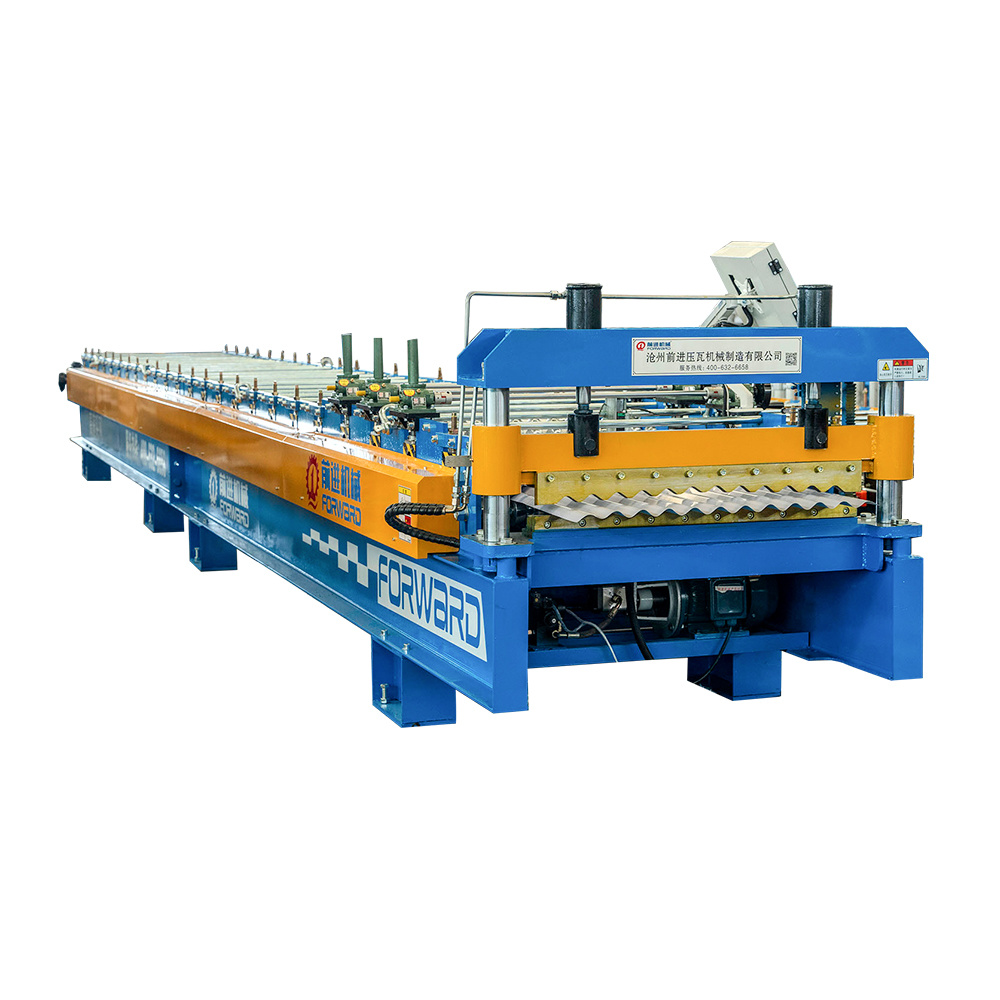The Future of Metal Fabrication: Exploring Innovative Light Gauge Steel Roll Forming Technology

The Future of Metal Fabrication: Exploring Innovative Light Gauge Steel Roll Forming Technology
Table of Contents
- Introduction to Light Gauge Steel Roll Forming
- What is Light Gauge Steel?
- The Technology Behind Roll Forming
- Benefits of Light Gauge Steel Roll Forming Technology
- Applications in Construction and Beyond
- Future Trends in Metal Fabrication
- Environmental Impact of Light Gauge Steel
- Conclusion
Introduction to Light Gauge Steel Roll Forming
The landscape of metal fabrication is undergoing a significant transformation, driven by technological advancements that promote efficiency, versatility, and sustainability. Light gauge steel roll forming technology stands at the forefront of this evolution, offering innovative solutions that redefine the manufacturing and construction industries. As we explore the future of metal fabrication, it is essential to understand the unique features and benefits of light gauge steel roll forming technology.
What is Light Gauge Steel?
Light gauge steel is a type of steel that is thinner than traditional structural steel. Typically, it has a thickness ranging from 0.5 mm to 3 mm and is used in various applications, including residential and commercial buildings. Its lightweight properties make it easier to transport and handle, while its strength and durability ensure it meets structural requirements.
Light gauge steel is often used in framing systems, roofing, and wall panels, providing a viable alternative to traditional materials such as wood and concrete. As the demand for sustainable building materials grows, light gauge steel is emerging as a preferred choice due to its recyclability and reduced environmental impact.
The Technology Behind Roll Forming
Roll forming is a continuous bending operation where a long strip of metal is passed through consecutive pairs of rolls, thus creating the desired cross-section. This process is efficient, allowing manufacturers to produce a wide range of profiles with precision and consistency. The technology involved in roll forming has evolved significantly over the years, incorporating advanced machinery and software to enhance productivity and reduce waste.
Today’s roll forming machines are equipped with features such as automated adjustments, real-time monitoring, and enhanced safety protocols. These advancements not only optimize production but also ensure high-quality output that meets stringent industry standards.
Benefits of Light Gauge Steel Roll Forming Technology
The adoption of light gauge steel roll forming technology comes with a myriad of benefits, making it an attractive option for manufacturers and builders alike.
Cost-Effectiveness
One of the primary advantages of light gauge steel roll forming is its cost-effectiveness. The manufacturing process is efficient, reducing labor costs and material waste. Additionally, the lightweight nature of light gauge steel means lower transportation costs and easier handling on construction sites.
Furthermore, the durability and longevity of steel reduce the need for frequent repairs or replacements, ultimately leading to lower lifecycle costs.
Energy Efficiency
Light gauge steel roll forming is inherently energy-efficient. The manufacturing process requires less energy compared to traditional steel fabrication methods. Additionally, structures built with light gauge steel benefit from superior insulation properties, which can lead to reduced energy consumption for heating and cooling.
Moreover, many manufacturers are implementing energy-efficient practices in their production processes, enhancing the overall sustainability of light gauge steel.
Design Flexibility
Light gauge steel offers unparalleled design flexibility. The roll forming process allows for the creation of complex shapes and profiles that can be tailored to specific project requirements. This versatility enables architects and builders to innovate and implement unique designs while maintaining structural integrity.
The ability to easily modify designs during the manufacturing process also streamlines project timelines and reduces costs.
Applications in Construction and Beyond
Light gauge steel roll forming technology has a wide array of applications in the construction industry and beyond. Its primary uses include:
Residential Construction
In residential construction, light gauge steel is used for framing, roofing, and wall systems. Its lightweight nature simplifies the construction process, enabling quicker builds and reduced labor costs.
Commercial Buildings
For commercial buildings, light gauge steel provides a robust and reliable solution for structural framing. Many modern commercial buildings incorporate light gauge steel due to its ability to meet stringent building codes and performance criteria.
Industrial Applications
Light gauge steel is also gaining traction in industrial applications, where its strength and durability are crucial. From storage facilities to manufacturing plants, the versatility of light gauge steel makes it an ideal choice for various industrial structures.
Future Trends in Metal Fabrication
The future of metal fabrication, particularly light gauge steel roll forming, is poised for growth and innovation. Key trends that are shaping this future include:
Increased Automation
As technology continues to advance, automation in the roll forming process is expected to increase. Automated systems can enhance efficiency, reduce labor costs, and improve safety on production floors.
Integration of Smart Technologies
The integration of smart technologies such as IoT (Internet of Things) and AI (Artificial Intelligence) will likely play a significant role in optimizing manufacturing processes. These technologies can enable real-time monitoring, predictive maintenance, and enhanced quality control.
Focus on Sustainability
Sustainability will remain a critical factor in the future of metal fabrication. Light gauge steel is naturally recyclable, and as the industry shifts towards greener practices, the demand for sustainable materials will continue to rise. Manufacturers will likely prioritize eco-friendly processes and materials to meet market expectations.
Environmental Impact of Light Gauge Steel
Light gauge steel roll forming technology not only offers economic benefits but also contributes positively to environmental sustainability. The use of recyclable materials reduces landfill waste and the carbon footprint associated with manufacturing.
Furthermore, light gauge steel's energy efficiency translates to lower emissions during the building's operational phase. As societies become increasingly aware of climate change and sustainability, the use of light gauge steel will likely grow, reinforcing its position as a preferred material in construction.
Conclusion
The future of metal fabrication is bright, with light gauge steel roll forming technology at its forefront. This innovative approach offers numerous benefits, including cost-effectiveness, energy efficiency, and design flexibility, making it an invaluable asset in the construction industry and beyond.
As we move forward, we can expect to see increased automation, the integration of smart technologies, and a stronger emphasis on sustainability in the metal fabrication sector. Embracing these advancements will not only enhance the efficiency and effectiveness of manufacturing processes but also contribute to a more sustainable future. By understanding and leveraging the potential of light gauge steel roll forming technology, we are well-positioned to lead the way in modern metal fabrication.
FAQs
1. What is light gauge steel roll forming, and how does it work?
Light gauge steel roll forming is a manufacturing process that involves bending a long strip of metal into specific shapes using a series of rollers. This method allows for the production of lightweight, durable steel profiles.
2. What are the primary applications of light gauge steel?
Light gauge steel is primarily used in residential and commercial construction, as well as in industrial applications. It is often employed for framing, roofing, and wall systems.
3. How does light gauge steel compare to traditional materials?
Light gauge steel offers several advantages over traditional materials such as wood and concrete, including higher durability, lower cost, and improved energy efficiency.
4. What are the future trends for light gauge steel roll forming?
Future trends include increased automation, integration of smart technologies, and a greater focus on sustainability within the manufacturing process.
5. How does the use of light gauge steel impact the environment?
Light gauge steel is recyclable and contributes to lower emissions during construction and operation. Its use helps reduce landfill waste and promotes sustainable building practices.
Key words:
recommend News
Share



